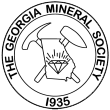GMS Field Trip December 2022
If you have any questions about field trips send email toGMS Field Trip
Mississippian Marine Fossils and Geodes in Tennessee
Saturday, December 17, 2022
As the day of this trip drew nearer and nearer, Charles and I watched happily as the water level in the area went lower and lower. We were excited because the lower the water level, the more shoreline exposed, and the more shoreline exposed, the more fossils to be found. But then came the rain. We watched nervously as the water level went higher and higher and the temperature went lower and lower. Yet, all was well. The water level was fine and the cold did not affect the trip.
Charles arranged a special discount at a local hotel. There were so many of us that the hotel owner graciously allocated all of the rooms to GMS! There was a lovely outside patio with a fire pit and grill, so we started the fun a bit early by having a cookout the night before the trip. Members brought all kinds of goodies including chips and dip, baked beans, brownies, and blueberry cobber. We also had hotdogs and marshmallows to roast, plus some chocolate bars and graham crackers for making ‘smores. No comment on Charles’ grill lighting skills, but suffice it to say, we ultimately had some glowing charcoals perfect for roasting our dinner and for taking a little bit of the edge off of the crisp winds.
The next day, members were eager to get to the fossils. The area we visited is in the Fort Payne formation, where you can find a variety of Mississippian marine fossils that are about 323.2 to 358.9 million years old. At the first location, members had no trouble finding the rugose coral Lithostrotionella, easily identified by its hexagonal, colonial structures. One member had a bucket filled to the brim, but not with coral fossils – it was trash! Why? Because this location is on private property and Charles arranged with the owners to clean up trash in exchange for allowing us to collect there. As members collected coral fossils, they also picked up trash. We ended up carrying out a large garbage bag full!
At the second location, we found plenty of crinoid fossils, but it can be difficult to determine species. The crinoids Agaricocrinus and Eretmocrinus are well represented and can be identified by their elusive calyxes, which we will learn about below. Everyone got lots of crinoid fossils for themselves and for grab bags. And, although calyxes are difficult to find, several members were thrilled to bring home their first specimens! So, what are calyxes and why are they so hard to find? The answers lie in crinoid anatomy.
Although they may look like plants, crinoids are animals. And yes, the use of the present tense in the prior sentence is correct because, even though we tend to think of most fossilized creatures as extinct, there are still a few hundred species of living crinoids. They have their own class, Crinoidea, in the phylum Echinodermata, so their close relatives include starfish and sea urchins. Because of that, we often see a fivefold symmetry in the fossils. Some crinoids, often called “feather stars”, float through water. Others anchor to the bottom of the ocean and are often called “sea lilies” because their graceful forms give them a flower-like appearance.
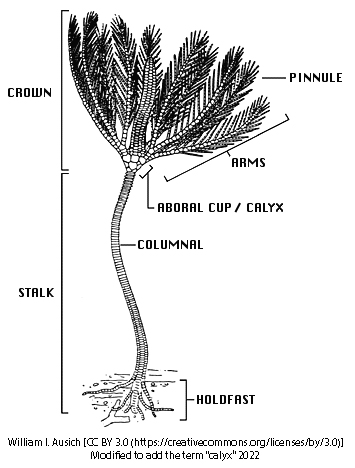 The crinoid fossils we found originally consisted of calcium carbonate covered by a small amount of soft tissue. They had stalks made of columnal segments topped with a cup-like structure – the calyx. Arms with feathery structures called “pinnules” to filter water for food were connected to the calyx. There may have been root-like structures called “cirri” along the stalk and/or a structure called a "holdfast" at the bottom to help the crinoid anchor itself. The stalks could be several meters long, with the calyx comprising only a small portion of the animal. In fact, as of this writing, the longest fossilized stem found was 40 meters! Fossilized stalks tend to be broken into smaller pieces that we refer to more commonly as “stems”. Individual columnal segments can be found too. The stems can be so well-preserved that you can see individual columnal segments stacked and interlocked like poker chips, while calyxes may have been so delicate that they were crushed or broken before they had a chance to fossilize and even after they were fossilized. Considering all of these factors, it is easy to see why there are naturally more fossilized stems than calyxes.
The crinoid fossils we found originally consisted of calcium carbonate covered by a small amount of soft tissue. They had stalks made of columnal segments topped with a cup-like structure – the calyx. Arms with feathery structures called “pinnules” to filter water for food were connected to the calyx. There may have been root-like structures called “cirri” along the stalk and/or a structure called a "holdfast" at the bottom to help the crinoid anchor itself. The stalks could be several meters long, with the calyx comprising only a small portion of the animal. In fact, as of this writing, the longest fossilized stem found was 40 meters! Fossilized stalks tend to be broken into smaller pieces that we refer to more commonly as “stems”. Individual columnal segments can be found too. The stems can be so well-preserved that you can see individual columnal segments stacked and interlocked like poker chips, while calyxes may have been so delicate that they were crushed or broken before they had a chance to fossilize and even after they were fossilized. Considering all of these factors, it is easy to see why there are naturally more fossilized stems than calyxes.
In addition to crinoid stems and calyxes, we also found sedimentary rocks composed of crinoid fossils, some with crinoid stems sticking out. Rocks like these are called “encrinites” if they consist of more than fifty percent crinoid fossils. The crinoids in the encrinites we found are mostly highly silicified i.e., replaced with silica, and often have a subtle blue-gray color, so pieces that are not suitable as specimens may be suitable for lapidary material. Members found other fossils too, including horn corals, brachiopods, bryozoans, and even a blastoid, an extinct relative of crinoids.
We could have looked for crinoids all day, but there was more to see and do, so we took a break for lunch. Then, we headed to the third and final destination where we hiked through woods until we popped out onto the lakeshore. Some members practiced their geode breaking techniques while others collected small geodes and broken bits of geodes for grab bags. We also found many coral fossils there, but they are different from the corals we collected that morning. Some are hollow and lined with quartz crystals while some are mostly solid, silicified blue-gray like the encrinites at the second location. The corals can be identified as such by their external structures, but there are no fine details to help with species identification.
It was a wonderful trip and we all had so much fun together! The hotel was a big surprise and far beyond our expectations, so we must thank the hotel owners for the excellent accommodations. Many thanks to Charles for arranging the trip, and many thanks to everyone who attended.
Lori Carter
On behalf of Charles Carter, Field Trip Chair
e-mail:
The Hotel!
Photos by Lori Carter

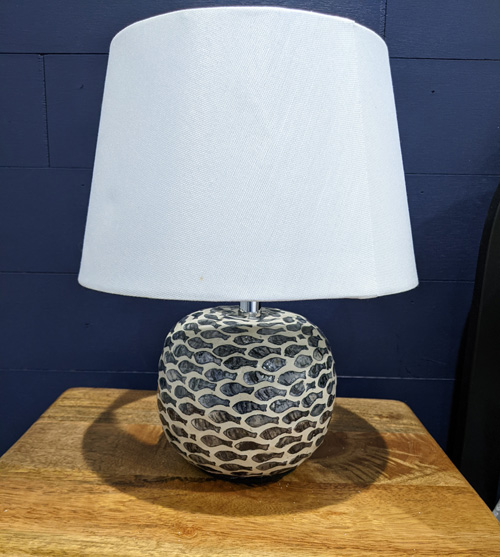
The hotel was incredible! I especially liked the lamp in our room.
Unfortunately, I was having so much fun I forgot to take pictures of the cookout!
Location 1: Coral and more
Photo by Lori Carter

Perfect example of the Lithostrotionella coral
Photo by Lori Carter

Very nice brachiopod
Photos by Lori Carter

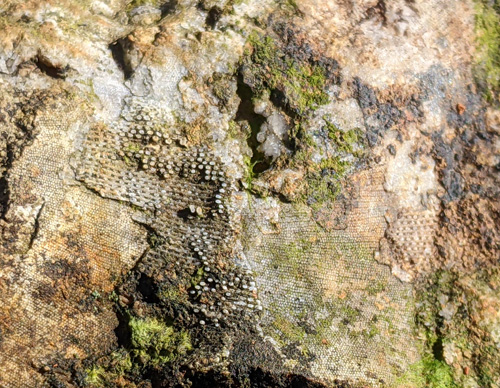
Rock covered with bryozoans with a close-up of the bryozoans
Photos by Lori Carter

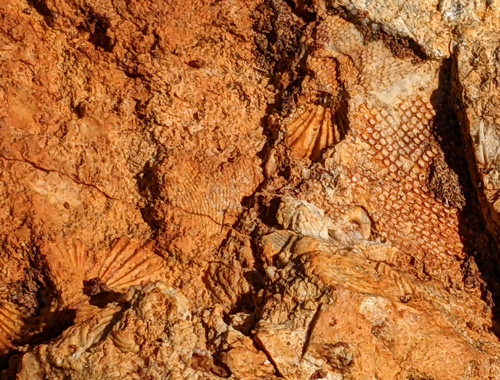
Another specimen with bryozoans, shells, and other fossils
Photo by Lori Carter
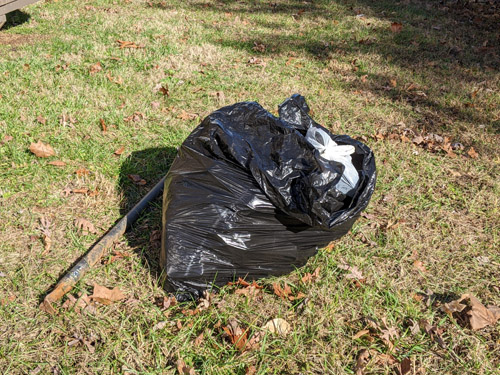
Not only did we collect fossils, we also collected a big bag of trash too!
Location 2: Crinoids and other fossils
Photo by Lori Carter

Single columnal segment with a star shaped center
Photo by Lori Carter

More examples of columnal segments with star or flower shaped centers
that are indicative of the fivefold symmetry common in echinoderms
Photo by Lori Carter
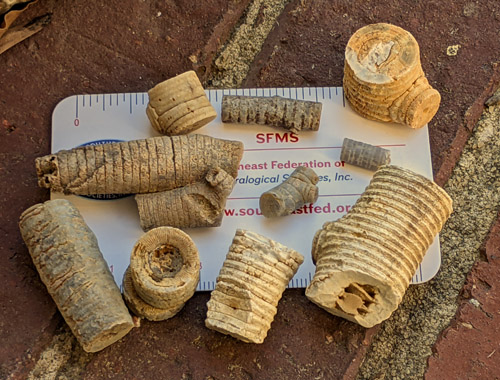
Examples of other interesting stems
Photos by Lori Carter
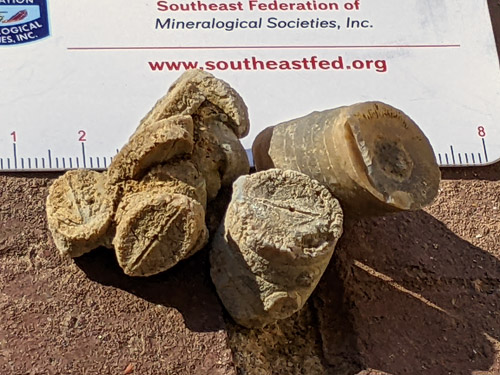

These stems are oval shaped. They are most likely from a crinoid of the family Platycrinidae.
The second picture helps illustrate how the stalks of this family of crinoids would be spiralled.
Photos by Lori Carter


This stem is a good example of the stacked poker chip nature of some crinoid columnal segments
Photos by Lori Carter


The first calyx of the day! Agaricocrinus
Photos by Lori Carter

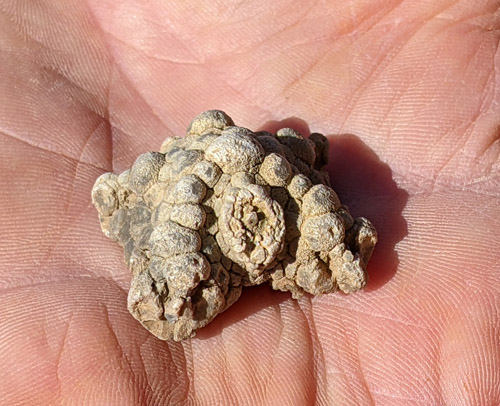
Another Agaricocrinus calyx!
Photos by Lori Carter


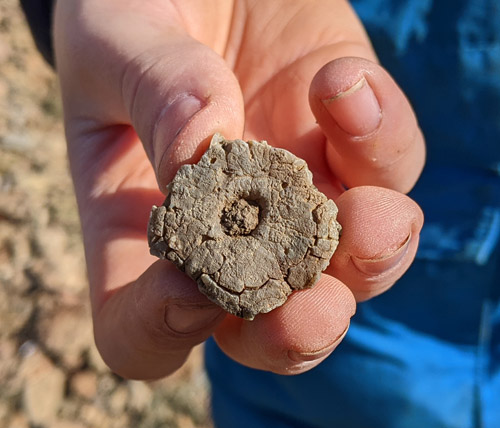
This calyx appears to be either Alloprosallocrinus or a species in the family Batocrinidae
Photos by Lori Carter
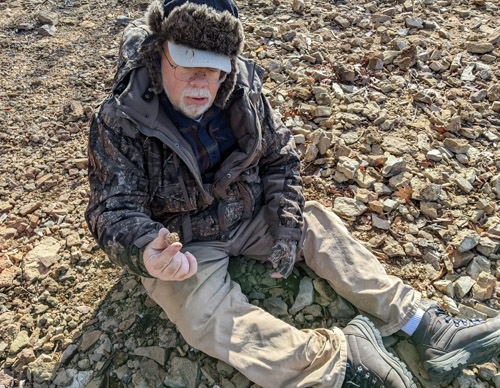

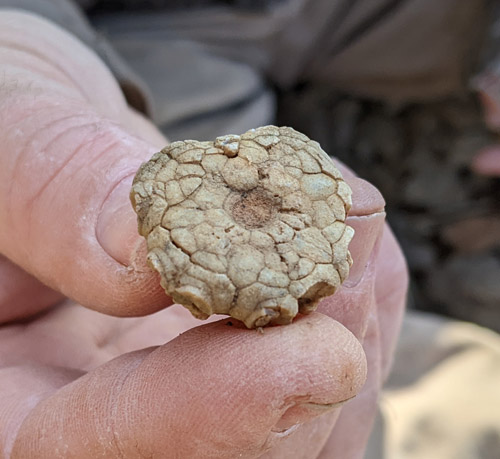
This calyx also appears to be either Alloprosallocrinus or a species in the family Batocrinidae
Photo by Lori Carter
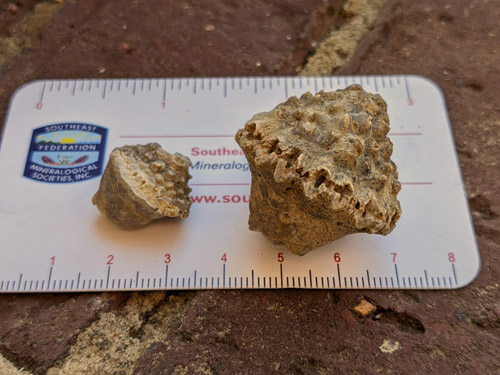
These two are most likely Eretmocrinus
Photos by Lori Carter

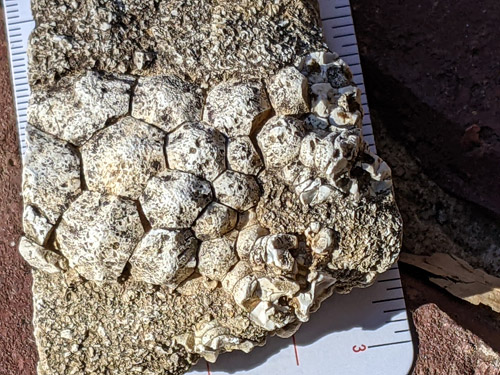
Possibly a crushed and distorted calyx
Photo by Lori Carter
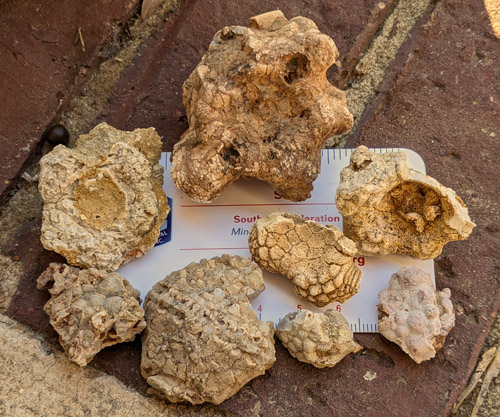
An assortment of partial calyxes and pieces of calyxes
Photo by Lori Carter
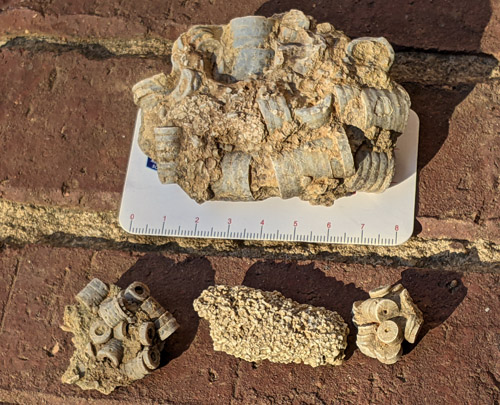
Clusters of crinoid stems
Photo by Lori Carter

A nice example of a cluster of crinoid stems
Photo by Lori Carter

Al's "owl" cluster
Photo by Lori Carter

Beautiful encrinite with a cross section of a stem plus other crinoid bits
Photo by Lori Carter
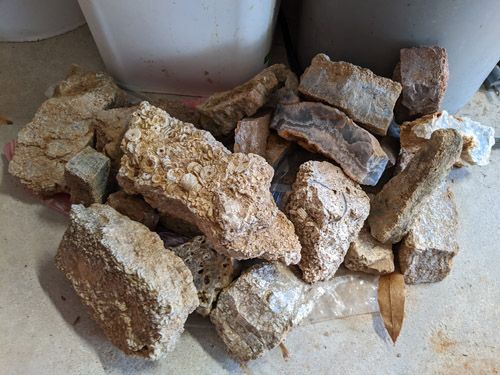
A pile of encrinite material to be evaluated for lapidary use
Photo by Lori Carter
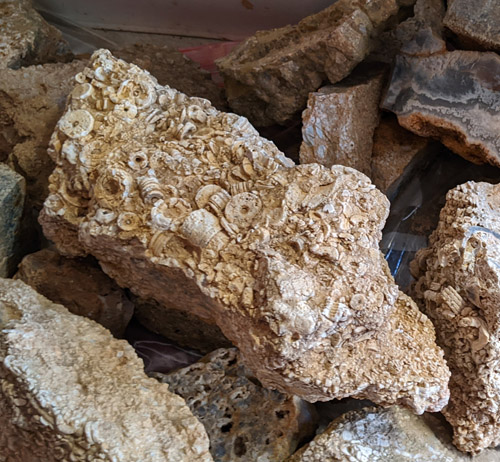
Encrinite with crinoid stems sticking out
Photo by Lori Carter
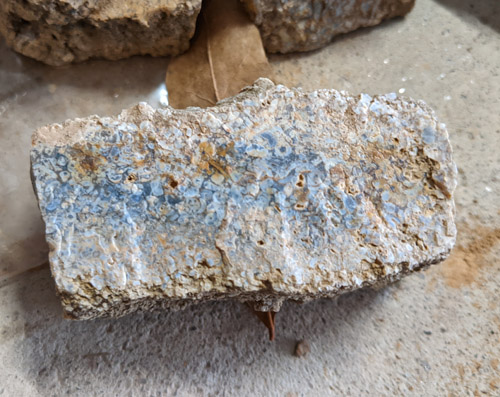
Encrinite with blue areas that should polish up nicely
Photo by Lori Carter

Another encrinite with good lapidary potential
Photos by Lori Carter

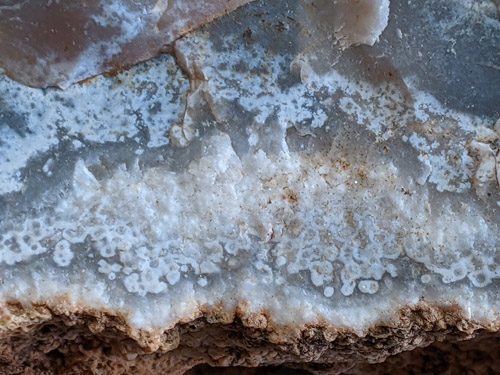
This piece has some beautiful agate!
Photos by Lori Carter


Horn corals
Photo by Lori Carter
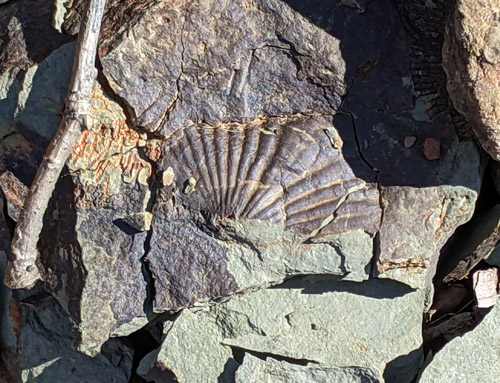
A brachiopod in shale that was too delicate to remove without some sort of stabilizer
Photos by Lori Carter
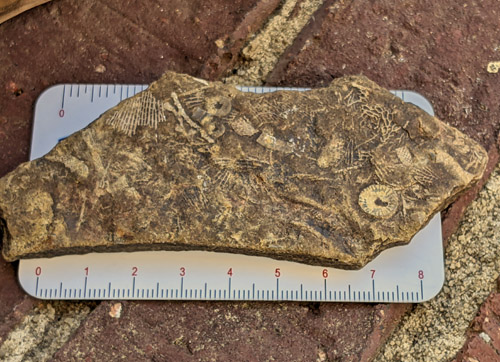


Beautiful branching bryozoans! Plus a few pieces of crinoids...
Photos by Lori Carter
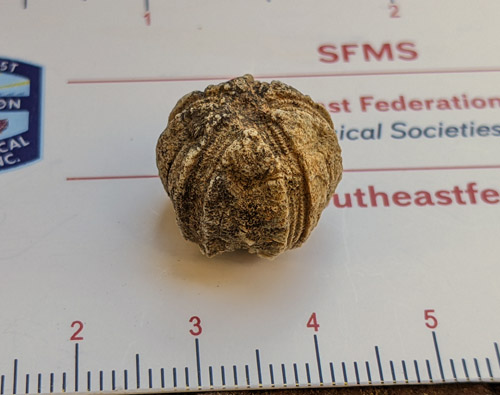
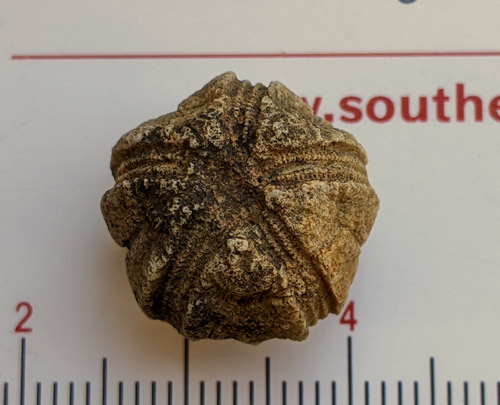
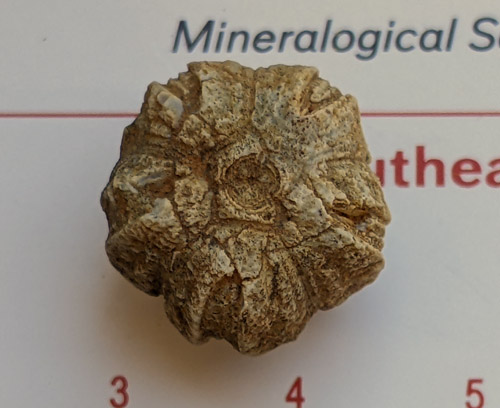
A blastoid. Like crinoids, blastoids were echinoderms. Unlike crinoids, they are extinct.
Photos by Lori Carter


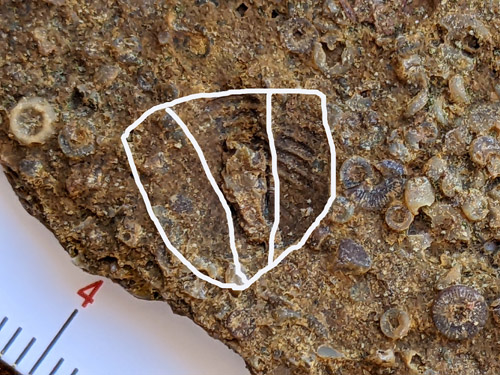

This fossil hash piece may have an impression of the tail of a trilobite!
Photos by Lori Carter

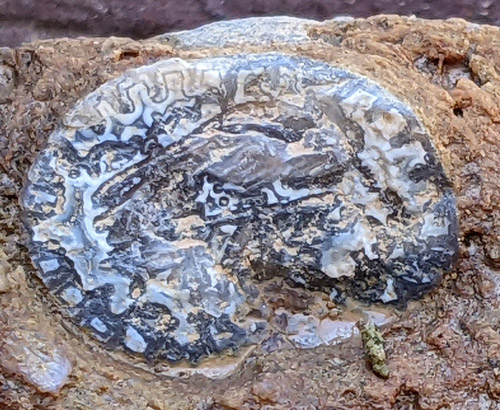

A beautifully silicified crinoid stem with banding plus a close-up of some bryozoan fossils around it
Location 3: Geodes and more coral
Photos by Al Klatt


Beautiful day for collecting
Photo by Lori Carter

Examples of some small geodes collected for grab bags
Photos by Lori Carter


Most geodes there have clear quartz crystals inside
Photos by Lori Carter



This coral is fairly well silicified inside and the external structure is visible, but without much detailed preservation
Photos by Ken Scher





Specimens after getting them home and through a bit of washing
Click below for field trip policies

Copyright © Georgia Mineral Society, Inc.
